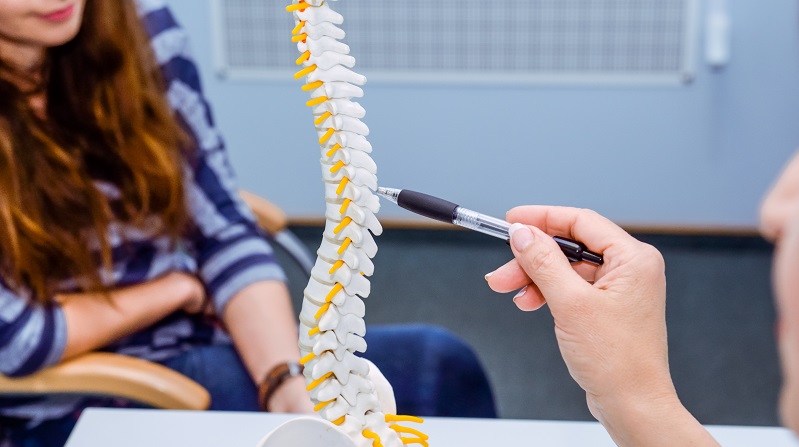What Is Central Cord Syndrome And How Is It Treated?
Category: Spine | Author: Stefano Sinicropi

Central Cord Syndrome (CCS) involves an incomplete traumatic injury somewhere along the cervical portion of the spinal cord. It can lead to a variety of symptoms, but because it involves an incomplete trauma to the spinal cord, it typically does not involve complete paralysis. Below, we take a closer look at why central cord syndrome can develop and how the condition is treated.
Central Cord Syndrome Causes And Symptoms
Central cord syndrome typically develops as a result of a traumatic force being exerted on the head and neck area. Even if there is no obvious fracture in the bones of the neck or spine, the spinal cord can be damaged as a result of the trauma. One of the most common types of injuries that can result in CCS is a car accident where the head is forcefully extended backwards, placing an extreme amount of stress on the neck and spinal cord. CCS is even more common when the individual is dealing with arthritic changes in the area, as this can lead to a narrowing of the path through which the spinal cord travels, meaning trauma can more easily lead to squeezing or pressure on the spinal cord.
When trauma is exerted on the spinal cord, bruising, bleeding and swelling can occur. This can lead to nerve compression of the many spinal nerves that branch off the spinal cord. Because of the location of the trauma, CCS is more likely to cause symptoms in the arms compared to the legs, although the legs may certainly be impacted.
The most common symptoms of central cord syndrome include:
- Weakness in the arms
- Lesser weakness in the legs
- Difficulty with fine motor tasks
- Inhibited ability to walk
- Lack of sensation or difficulty during urination
- Neck pain
Because arthritic changes are often an underlying factor, CCS is most common in individuals over the age of 50 who experience a neck hyperextension injury.
Diagnosis And Treatment
Because the condition is typically present after a traumatic neck event, odds are you’ll seek medical attention soon after the incident. However, if you suffered an injury and notice any of the above symptoms, it’s imperative that you connect with a spine specialist.
Your doctor will begin by learning about the accident and conducting a physical exam. Since the suspected injury is to the spinal cord, your doctor will likely order a cervical MRI or CT scan, although cervical X-rays may also be ordered to rule out a fracture or other issues.
Treatment will be based on the extent of the damage to the spinal cord. As you might imagine, working to decompress the spinal cord through an operation is something that doctors will work to avoid if at all possible. In many instances, if the patient is showing signs of progress, non-surgical means will be the pursued treatment. Non-surgical interventions include protecting the area from further trauma with the help of a rigid neck brace, followed by weeks of physical and occupational therapy once swelling and bruising has decreased. Many patients either fully recover from their injury or make significant strides within the first six weeks, although full recovery may take longer.
In rare instances where there is significant spinal cord compression, surgery may be ordered. This operation has gotten much safer thanks to advanced imaging techniques that allow the surgeon to decompress the area with adding additional trauma that leads to even more localized swelling.
For more information about central cord syndrome, or to talk to a spine specialist about a different back pain you’re dealing with, pick up the phone and call Dr. Sinicropi and the team at The Midwest Spine & Brain Institute today at (651) 430-3800.